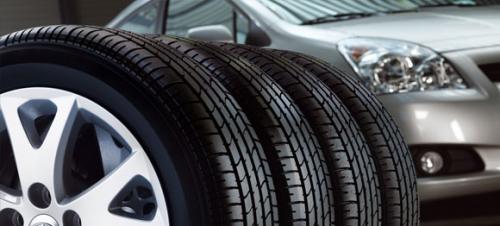Why Do My New Tyres Vibrate Even Though They Are Balanced?

Drivers may find tyre vibrations to be an annoying and possibly dangerous issue. Vibrations can last even after purchasing new tyres in Holmes Chapel and having them balanced, which can be uncomfortable and hinder the driving experience.
To assist drivers in safely returning to the road, we will examine the numerous causes of tyre vibrations in this article
Why Do My New Tyres Vibrate Even Though They Are Balanced?
Tyre vibrations can still happen even with fresh balancing for several reasons, including incorrect tyre pressure, misaligned wheels, worn-out suspension parts, defective tyres, damaged wheel rims or brake components.
Poor wheel balancing
Poor wheel balancing is a major cause of the vibrations you may still experience in your new tyres.
A balancing machine is used to measure any imbalances that may occur after a tyre is mounted onto a wheel. The machine then determines the proper location for the weights on the wheel to address these imbalances.
There may still be imbalances in the wheel that can lead to vibrations if the technician balancing the wheel does not do it correctly.
Damaged rims
Bending, chipping, or damaged rims are another reason why new tyres may vibrate even after they have been balanced. There's a possibility that tyres or wheels will sustain structural damage and bend as a result of rolling into a large pothole in the road.
Damages like a tiny bend or crack in the rim can lead to an uneven distribution of weight, which makes driving shaky.
Overinflated tyres
Vibrations can also be caused by overinflated tyres, even with newly balanced tyres. An overinflated tyre can cause vibrations that are felt in the steering wheel or throughout the vehicle, making it stiff and bouncy like a ball.
Loose Lug Nuts
The hub assembly of the car is held firmly in place by lug nuts. Wheel wobble, which results in vibrations while driving, can be caused by loose or incorrectly tightened lug nuts.
Wheels Alignment
Wheel alignment is an additional potential cause of vibrations in tyres. To prevent uneven tyre wear, proper wheel alignment makes sure that all four tyres point in the same direction and are perpendicular to the ground.
Inconsistent tyre wear patterns, pulling to one side and shaking of the steering wheel are just a few problems that can be brought on by misaligned wheels. It might be time for a wheel alignment check if you observe any of these symptoms or if your car has been in any kind of impact, such as colliding with a curb or pothole.
Defective tyres
Sometimes a tyre is out of round from the factory, which makes proper balancing difficult or impossible. Even if the technician does their best to balance the new tyres, vibrations may still occur. This could indicate a flaw in the tyre.
But don't worry—under warranty, a replacement is guaranteed in these situations.
Tyre defects can also refer to problems with the tyre's internal structure, rather than just physical damage or imperfections that are visually apparent.
Worn-out suspension parts
Tyre vibrations can be greatly increased by worn-out suspension parts. Due to frequent use or rough road conditions, components like wheel bearings, control arms, shocks or struts, and tie rods may eventually wear out or malfunction.
Additional Reasons
Although we have covered several tire-related causes for driving vibrations, tyres are not the only possible offender. Additional, less plausible causes of vibrations include:
- Problems with gearbox
- Engine-related component
- Damaged brake rotor
It's critical to have any vibrations checked out by a qualified mechanic to guarantee road safety and stop additional vehicle damage.
It is never advisable to ignore a vibration since doing so will only cause it to get worse over time, turning from minor annoyances to potentially harmful risks.
Avoiding Tyre Vibrations Through Preventive Measures
To extend the life of your tyres and prevent future vibrations, regular tyre maintenance is essential. Observe the following important advice:
Wheel alignment:- Regular wheel alignments can lessen the likelihood of uneven wear and vibrations brought on by misaligned wheels.
- Turn your tyres:- This will help maintain uniform wear. You should rotate your tyres every 5,000 to 8,000 miles.
- Be mindful of the tread depth:- As worn tread can impair handling and grip, regularly check your tyres for it.
- Check tyre pressure:- Before embarking on a lengthy journey, or at least once a month, make sure to check the pressure in your tyres. Vibration and uneven wear can result from improper tyre pressure.
- Steer clear of rough driving conditions:- Steer clear of uneven or rough terrain whenever you can because it can wear down your tyres excessively and cause vibrations.
- Investing in high-quality tyres can significantly lower the chance of having tyre vibrations that don't go away. Cheap or poorly constructed tyres are more prone to flaws and uneven wear, which can lead to driving imbalances and vibrations.
In conclusion, tyre vibration in new tyres is a frequent and annoying problem. maintenance is essential if you want to guarantee a smooth ride and stop annoying vibrations in your car's steering wheel.
In addition, worn suspension components and joints, uneven tyre wear, loose parts, and poor tyre alignment can all contribute to persistent vibration problems. Whatever the situation, though, our technicians will work with you to identify the source of the issue, fix or replace any defective parts, and get rid of vibrations so you can drive safely and comfortably.
Post Your Ad Here
Comments